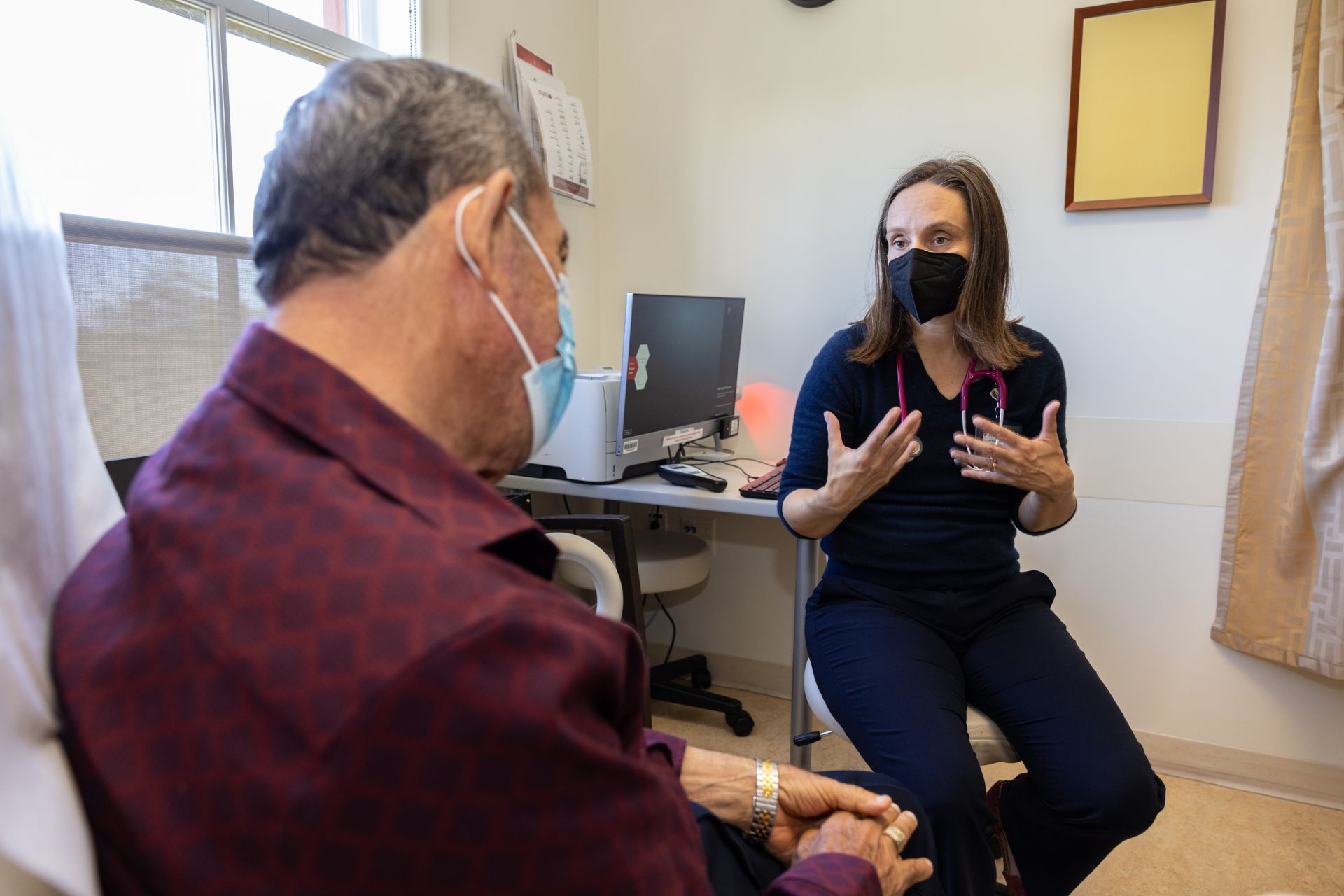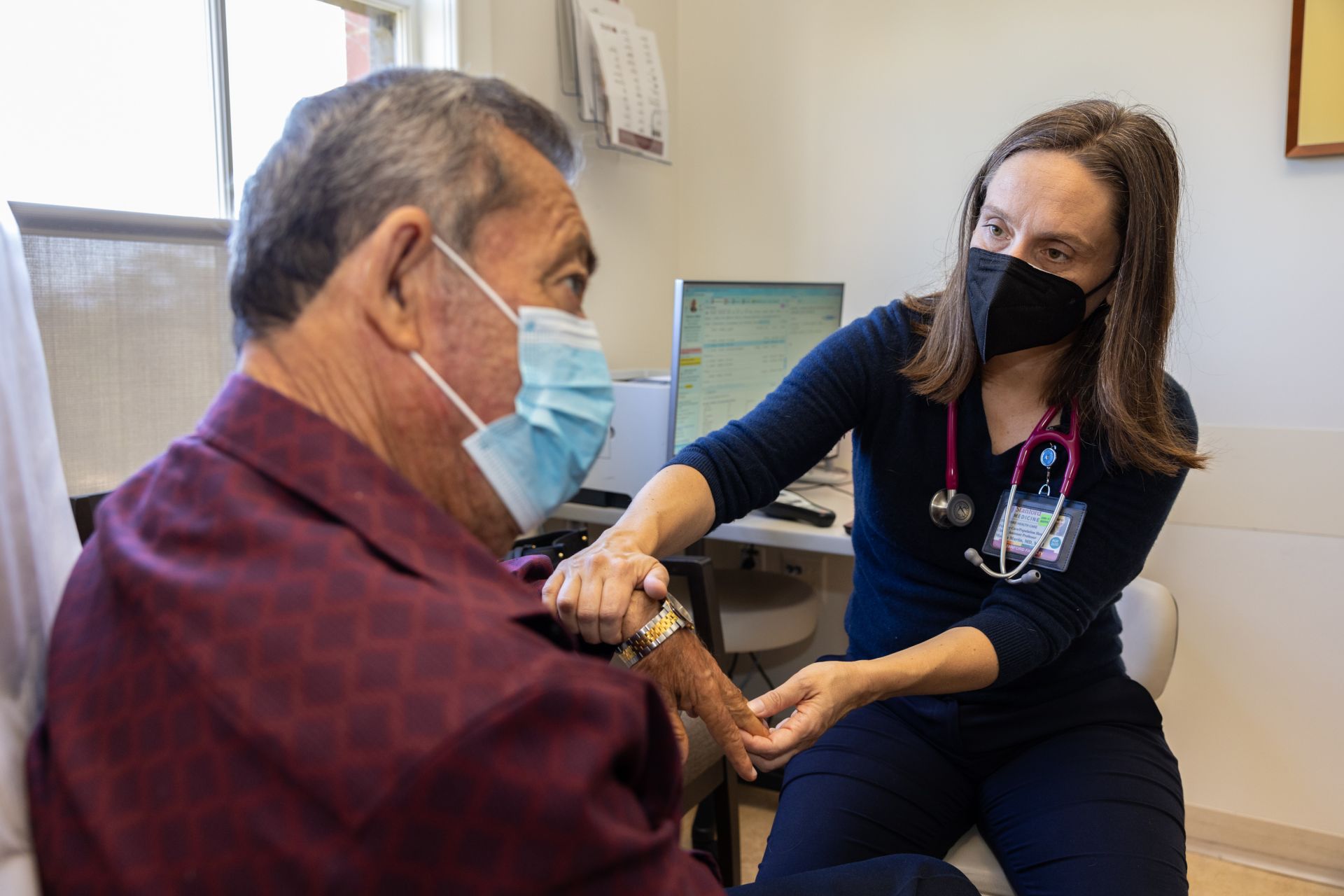Smoothing the Pathway Home for Older Patients

Smoothing the Pathway Home for Older Patients
As part of her training in geriatric medicine, Marina Martin, MD, MPH, spent time in assisted living facilities and visited patients at home. She knew that after a hospital stay, older patients often struggled to get their needs met — from filling prescriptions and buying groceries to scheduling and remembering follow-up appointments.
Then, shortly after Martin finished her fellowship, doctors diagnosed her father with glioblastoma. He moved into her house, and she became his primary caretaker. Suddenly, she gained a new appreciation for the day-to-day difficulties that many of her patients wrestled with.
“I experienced firsthand what it’s like for seriously ill patients and their families,” Martin says. “A lot of support and resources are offered to you all at once, but there’s often no one acting like the quarterback and coordinating it all.”
The experience inspired Martin, who is now a clinical associate professor of primary care and population health, to work harder to bridge hospital care with home health. Supporting geriatric patients after they leave the hospital, she reasoned, could help reduce the number of patients who end up back at the emergency room.
“The time immediately after a patient is discharged is very complicated; there are a lot of things thrown at the patient, a lot to manage, and often a lot of changes to their daily life,” says Martin. “It’s a very vulnerable time, but it’s also a time of great opportunity to change the trajectory of what happens to these patients.”

“Because we’re in the Stanford system, it’s much easier for us to do things like schedule a new appointment, fix medication errors, or get a new symptom quickly addressed.”
– Marina Martin, MD, MPH

Marina Martin, MD, MPH
Others at Stanford agreed, and in 2021, Martin became the medical director of the newly formed Aging Adult Services Transitions of Care Program, with Carolyn Bogard, MS, RN, acting as nursing director.
If a patient at Stanford Hospital over the age of 65 has complex and serious health problems, a nurse, social worker, or occupational therapist affiliated with the Transitions of Care Program meets with the patient before he or she is discharged. A few days later, they follow up by phone, often arranging a home visit. During the visit, they spend time reviewing a patient’s medications, medical follow-up care, and home environment. If a prescription or appointment needs tweaking, the program’s easy access to doctors and nurses makes it easier to do so.
Even when patients are living in a skilled nursing facility, these kinds of problems often go unnoticed or are difficult for staff members to fix.
“Skilled nursing facilities are kind of like islands in the healthcare system,” she says. “A lot of information can be lost on transfer between a hospital and skilled nursing facility, and then again between skilled nursing and home.”
The Transitions of Care Program, Martin says, enables continuity of health care during these transitions. Over the first year of the program, Martin says, doctors and nurses have already helped patients solve a broad array of problems, from discarding expired medications to discussing end-of-life care.
“Because we’re in the Stanford system, it’s much easier for us to do things like schedule a new appointment, fix medication errors, or get a new symptom quickly addressed,” she says.
Martin recalls one recent case — a man with a broken hip treated at Stanford who was then transferred to a nursing facility. When her colleagues visited him there to review his follow-up plan, they learned that he needed a new primary care physician. They not only found a physician for him but also helped ensure that all the records from his hospital stay were forwarded to the new doctor so that nothing was missed.
“We’re kind of like professional gap fillers,” Martin jokes.
Seeing patients in the environment they live in and interacting with them face-to-face is the most powerful thing we can do.
– Marina Martin, MD, MPH
Seeing patients in the environment they live in and interacting with them face-to-face is the most powerful thing we can do.
– Marina Martin, MD, MPH
A Model to Follow
There are many ways to measure the success of the new Transitions of Care Program; already, patients and caregivers have expressed appreciation for the extra help. But Martin and her colleagues are also tracking metrics that are more quantitative. Among the population they help, they’ve already reduced the hospital readmission rate — how many people end up back in the hospital within 30 days — from 24% to 16%. In the future, they hope to collect additional data on patient satisfaction and quality of life.
As the data on the effectiveness of the program grows, Martin hopes that it helps Transitions of Care grow to serve more patients at Stanford and inspires other institutions to develop similar programs.
“There’s increasing interest in this kind of care across the country right now, because of some of the changes in the Medicare payment structure, where there’s more incentive to coordinate care and prevent readmissions,” explains Martin.
Many hospitals already have phone-call-based programs, where a nurse calls patients after hospitalizations, but Martin thinks the in-person visits that her team relies on are more effective at building rapport with patients and catching problems. “Seeing patients in the environment they live in and interacting with them face-to-face is the most powerful thing we can do,” she says.
A Growing Need for Geriatrics
Over the next 40 years, the number of Americans aged 65 and older — the population that Martin works with — is expected to double. This means that programs like Transitions of Care will only become more important, as the number of older people hospitalized for everything from broken hips to cancer increases with the aging population.
That’s one reason why Martin and her colleagues have also been working with Stanford School of Medicine to better train future doctors on the needs of older patients when they leave the hospital. Today, most medical trainees — other than geriatrics fellows — never set foot in a skilled nursing facility, see how a home health agency works with older people in their homes,

or visit patients in settings other than the hospital or clinic. Martin thinks there is a need to change this.
“Most geriatric patients spend the majority of their time at home or in a nursing home and visit the clinic once or twice a year,” says Martin. “Most of their health happens at home, and I think it’s important for doctors to understand how the home environment can shape the needs of their older patients.”
Through integrating more geriatrics training into the medical school curriculum, and pushing the limits of how Transitions of Care can help older patients at home, Martin hopes she can not just treat patients while they’re in the hospital but improve their life after a hospital stay as well.
